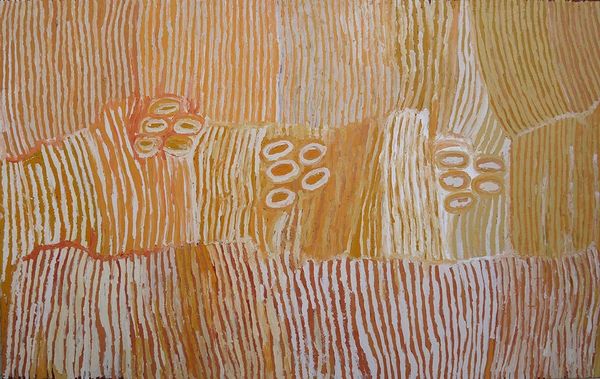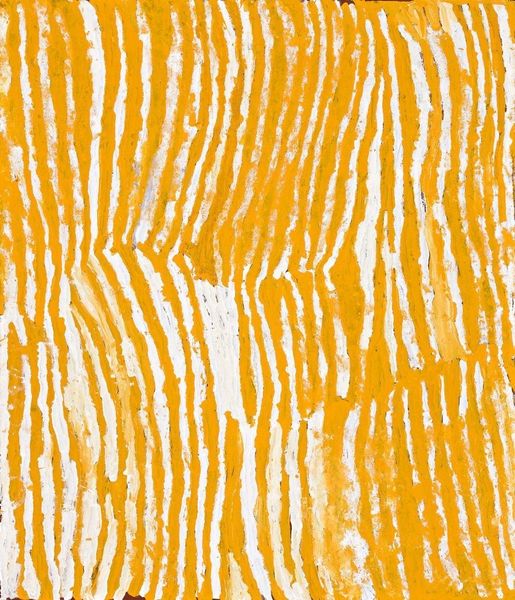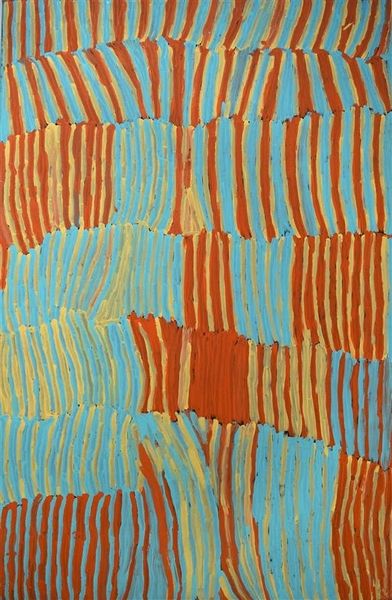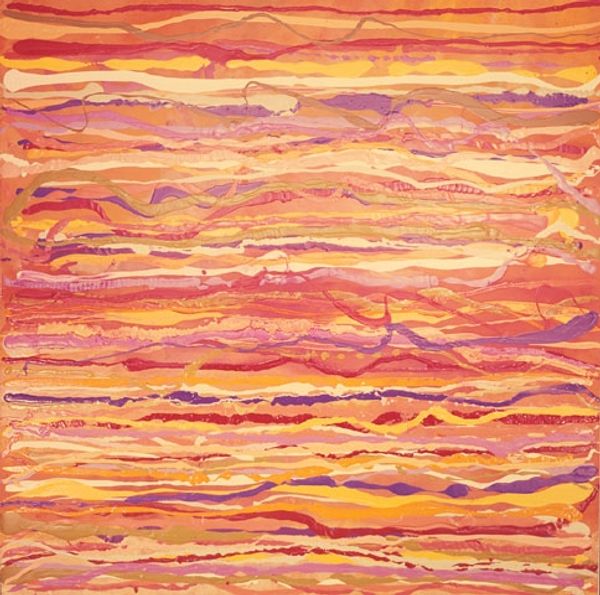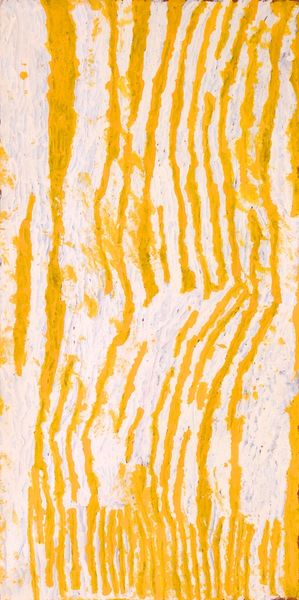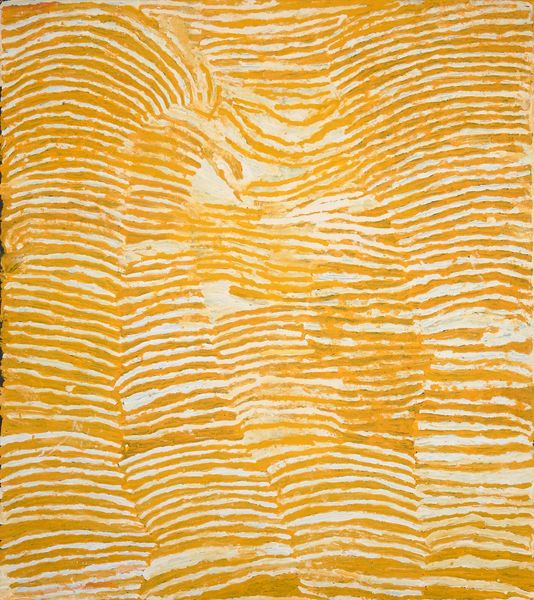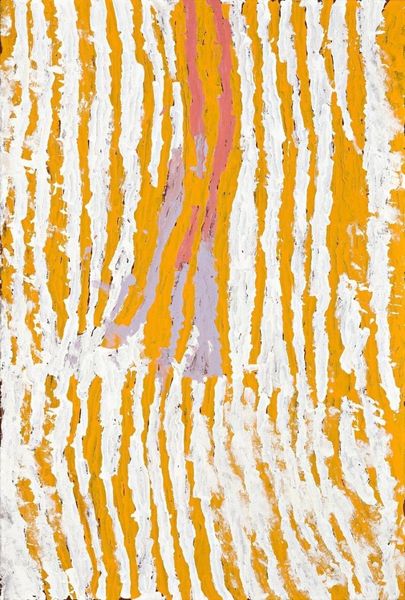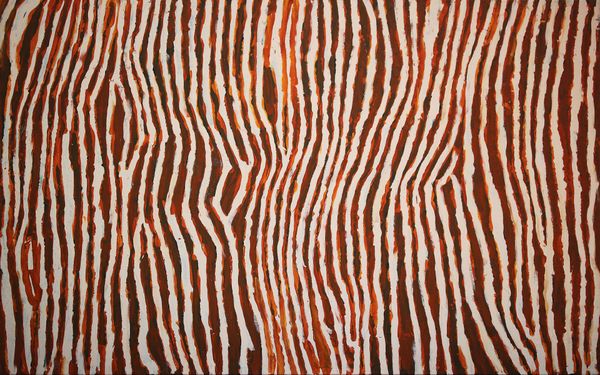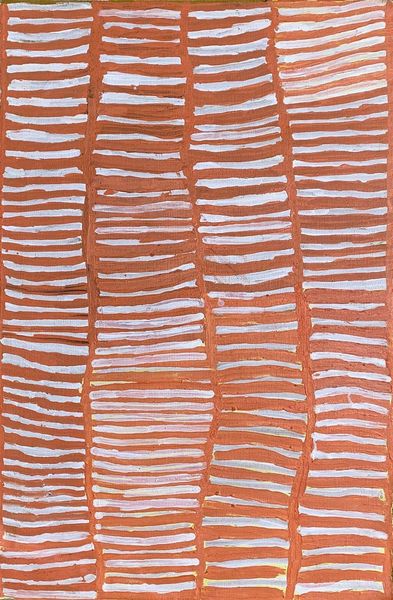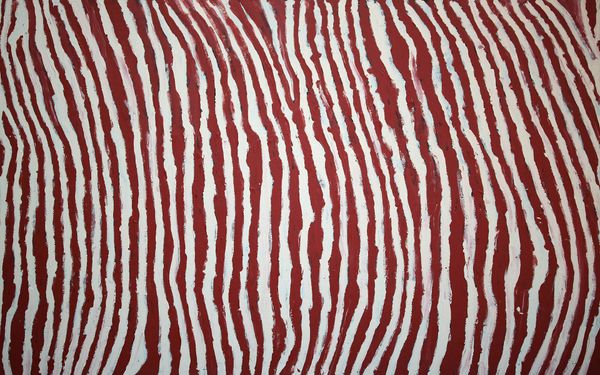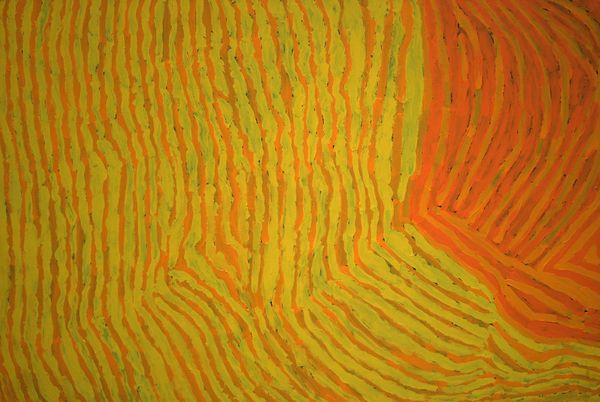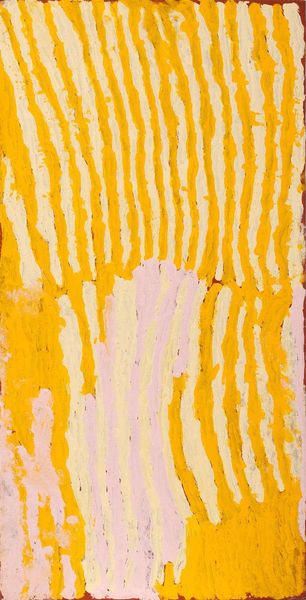
Copyright: Makinti Napanangka,Fair Use
Editor: This is "Lupulnga" by Makinti Napanangka, painted in 2005 using acrylic. The rhythmic lines create a captivating visual texture. How would you interpret this piece? Curator: I see a rich layering of symbolic language here. The repeated lines resonate with ancestral narratives and the enduring connection to the land. The colours, reminiscent of the desert landscape, evoke a sense of place and belonging. It’s like the artist is mapping a cultural memory. What feelings do those fiery orange lines evoke for you? Editor: Warmth and maybe a sense of energetic movement, almost like flowing water or… flames? Curator: Precisely. Such dichotomies are central to how symbols work; they invite contemplation. Now, consider the work's abstraction – is it merely aesthetic, or could it also act as a form of protection, shielding sacred knowledge from outsiders, only revealing aspects to the initiated? Editor: So, it’s a kind of visual language with multiple layers of meaning? A story told through symbols accessible to some but partially obscured to others? Curator: Exactly. Think of it as cultural DNA, passed down through generations. This artwork isn't just something pretty to look at, but a powerful statement about identity, history, and continuity. Editor: That gives me a whole new perspective. I hadn't considered how abstraction can simultaneously reveal and conceal meaning. Curator: It's the magic of symbols. They can unlock hidden stories, if we learn to read them. Editor: I will definitely approach abstract art with more curiosity and consideration from now on.
Comments
No comments
Be the first to comment and join the conversation on the ultimate creative platform.

